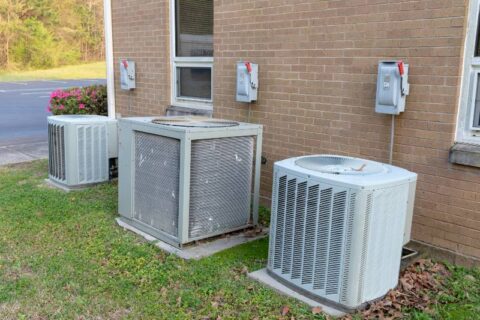Could Air Leaks be Raising Your Cooling Bills?
During the summer, achieving a cool, comfortable home is your top priority. However, air leaks can affect the efficiency of your cooling system, even if you’re diligent about scheduling air conditioning repairs and tune-ups.
Think of your home as a cooler used to chill drinks. Cracking the lid lets hot air inside, raising the temperature, melting the ice faster, and eventually leaving you with warm drinks. When air leaks occur in your home, they make your air conditioner work harder and subsequently raise the cost of cooling your home during warm weather.
Duct Leaks
One of the most common—but most difficult to identify—sources of air leaks in the home is the ductwork. Air ducts carry cooled air from your air conditioner to the living space. When the ducts are compromised, some of this air leaks out into the unconditioned spaces behind your walls, ceilings, and floors, where it does you and your family little good. Because some percentage of your AC’s output never reaches its intended location, your home feels warmer, and you’re more likely to turn down the thermostat, increasing the strain on your air conditioner and causing premature wear.
Speak with a qualified HVAC contractor about sealing and repairing your ductwork. Despite its name, don’t use duct tape to seal leaky ductwork. The adhesive can’t withstand the temperature changes and will degrade relatively quickly. Instead, seal holes in accessible air ducts with duct mastic. Professional duct sealant is also available to seal ductwork from the inside, ensuring all holes are plugged up, even if they’re located behind a wall. Sealing your ductwork can lower your cooling bills by 20 to 40 percent, depending on the extent of the leakage.
An HVAC technician may also recommend cleaning your ductwork if significant debris has built up over time. Removing obstructions from the ducts can further improve AC efficiency by allowing the air to flow unimpeded to its destination.
Ineffective Weatherstripping
Weatherstripping is used to seal the gaps around windows and doors, ensuring a snug fit. If your windows and doors do not fit perfectly inside their frames, the resulting gaps can allow conditioned air to leak from your home. Even though these gaps may seem small and inconsequential, several small openings can add up to considerable air—and energy—losses, particularly during the hottest times of the year.
Add weatherstripping to any windows and doors that don’t close tightly. Then, check your installation at least once a year. Replace any damaged weatherstripping promptly to prevent wasting energy.
Inadequate Attic Insulation
You need to address insulation as well as air leaks to achieve the most energy-efficient home. Think of the cooler analogy again. Drink coolers work because they feature thick, insulated walls. A thin, plastic container won’t keep your drinks cold for long, even if it’s air-tight—it needs insulation to resist heat transfer. And so does your home.
The easiest place to boost insulation is in the attic. Peek through the attic hatch to assess the current insulation. If any floor joists are poking through, you’re losing energy through the ceiling. About 10 to 14 inches of insulation is needed to achieve the recommended R-value. Just make sure the vented soffits remain unblocked so proper attic ventilation can occur.
Insufficient Ductwork Insulation
The ductwork is another area that benefits from added insulation. Without it, conditioned air picks up heat on its way to the supply registers scattered around your house. By the time it blows into a room, the air may feel much warmer than it should. This makes the air conditioner work harder to lower your home’s temperature, increasing your cooling bills in the process.
Insulate any air ducts you can access, including those running through the attic, garage, and unfinished basement. These are the most important areas to insulate because hot, unconditioned spaces sap the cold air from your ductwork faster than the air in interior wall cavities.
If you suspect air leaks are raising your energy bills, reach out to Parley’s PPM Plumbing, Heating, & Cooling. We can help optimize cooling performance this summer with AC repair and maintenance. Contact us today at 801-890-2037 to schedule cooling services in Orem or Draper, UT.


